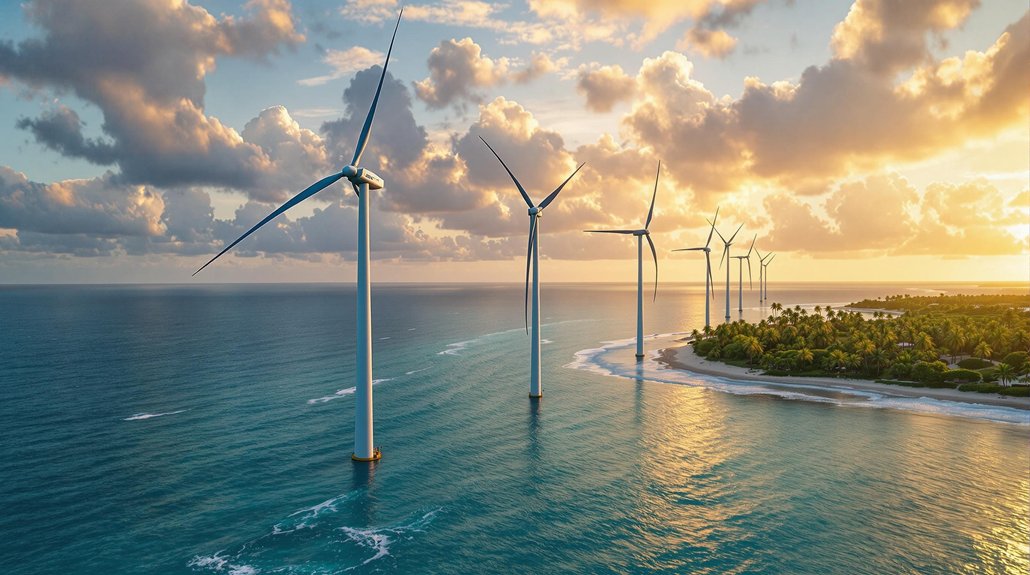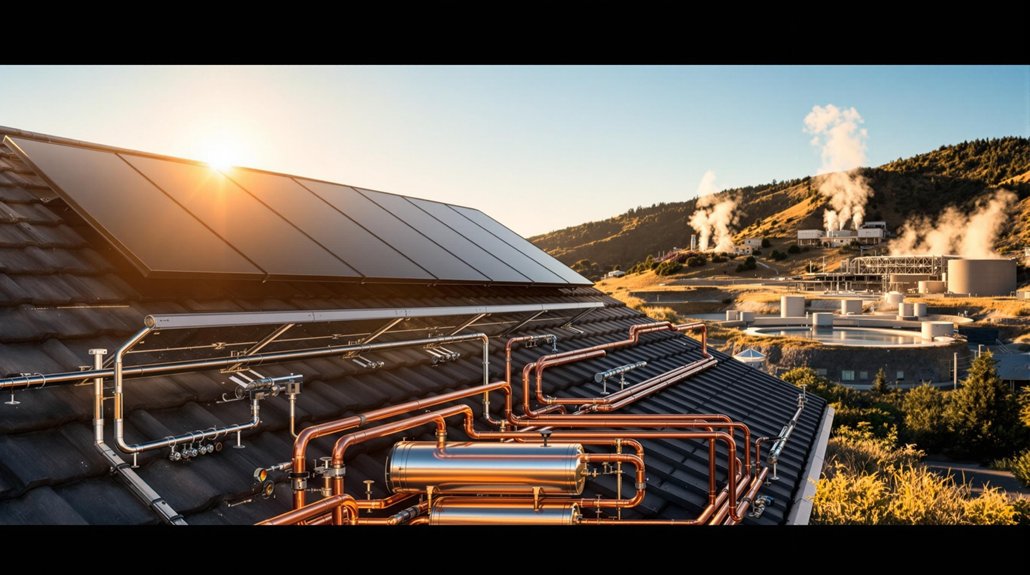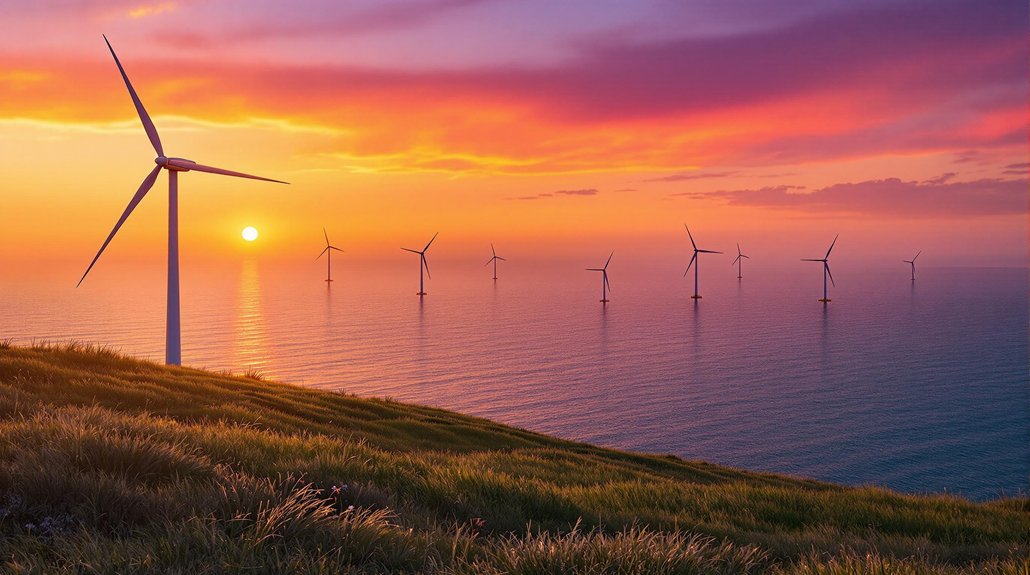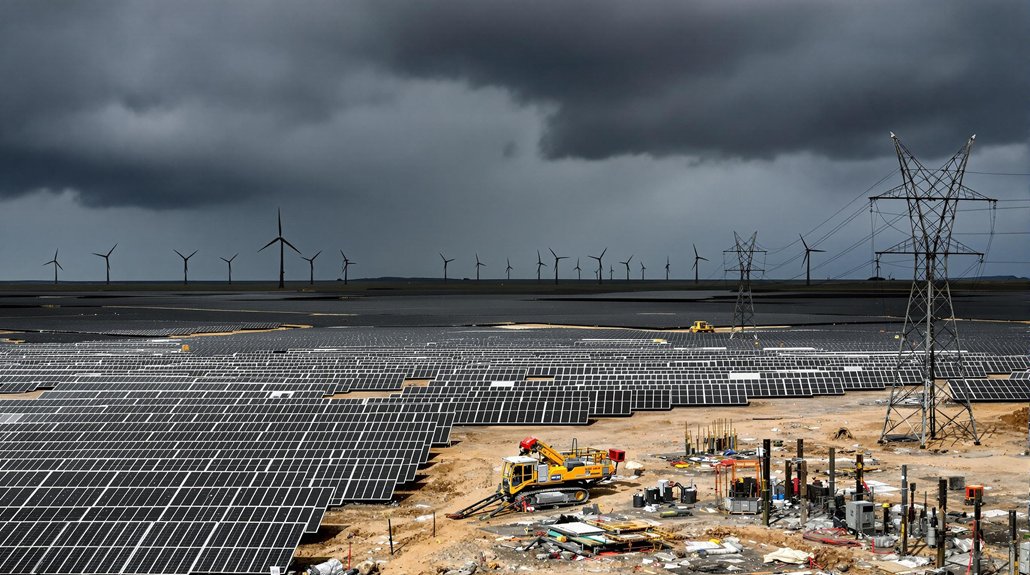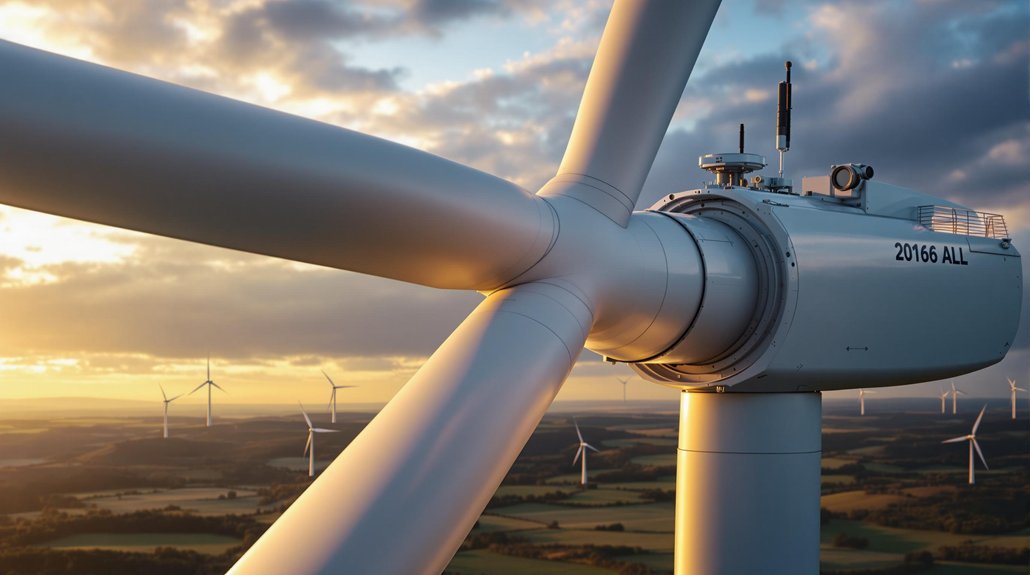Trade winds offer a promising source of renewable energy. These consistent winds, flowing northeast to southwest in the Northern Hemisphere and southeast to northwest in the Southern, can power offshore wind farms with impressive efficiency. Modern turbines convert wind’s kinetic energy into electricity with 40-50% capacity factors year-round. While challenges exist—including installation costs and transmission infrastructure—floating turbine technology shows particular promise for sustainable energy production in deeper waters.
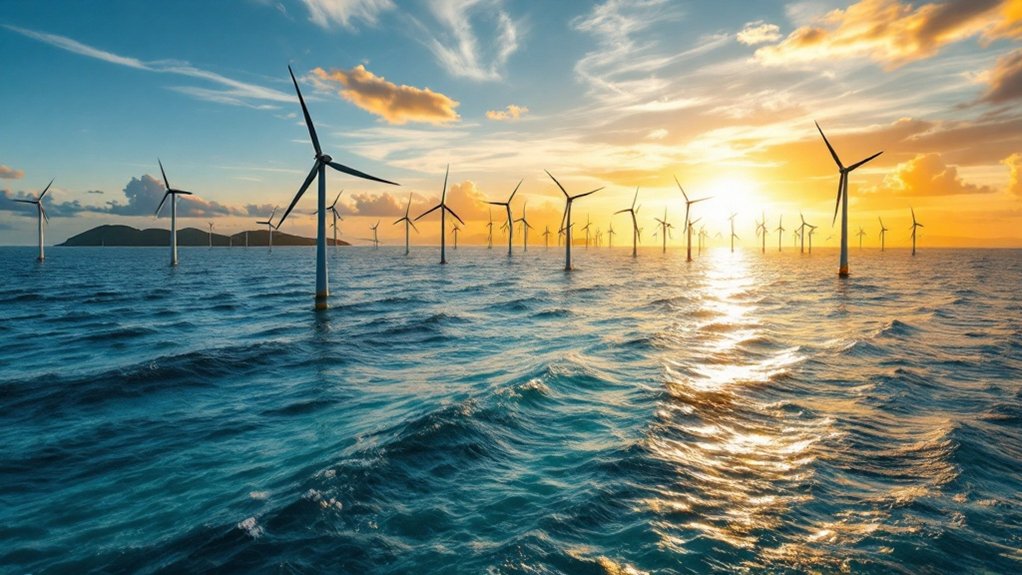
The powerful, steady winds that blow across Earth’s tropical regions have shaped human history for centuries. These trade winds flow northeast to southwest in the Northern Hemisphere and southeast to northwest in the Southern Hemisphere. They occur between 30 degrees north and south of the equator and form part of Earth’s global circulation system. For generations, sailing ships used these reliable winds to establish trade routes across the Atlantic and Pacific Oceans, enabling European exploration and connecting distant cultures.
Trade winds develop from a combination of atmospheric circulation and the Coriolis effect. High pressure subtropical ridges push air toward the equatorial low pressure zone. As this air moves, Earth’s rotation deflects it westward—to the right in the Northern Hemisphere and left in the Southern Hemisphere. This creates the consistent wind patterns that sailors relied on for predictable ocean crossings. These winds average 5 to 6 meters per second in speed, providing reliable conditions for both historical navigation and modern energy generation.
Earth’s rotation transforms simple air movements into the reliable trade winds that guided sailors across vast oceans for centuries.
Today, these same winds offer significant renewable energy potential. The steady nature of trade winds makes them ideal for wind farm development, especially in offshore locations where winds blow stronger and more consistently. Wind farms in these regions often achieve high capacity factors of 40-50%, meaning they produce energy efficiently throughout the year. This reliability is valuable for energy grids seeking stable power sources. Modern wind turbines use aerodynamic forces to convert this consistent kinetic energy into electricity that powers homes and businesses.
Trade wind energy represents a low-carbon alternative to fossil fuels. However, development requires careful planning. Environmental impact assessments help protect bird and bat populations. Developers must also consider noise impacts and visual changes for nearby communities. Despite these challenges, interest in trade wind energy continues to grow. Floating turbines provide a cost-efficient and safer solution compared to conventional bottom-fixed offshore farms in these regions.
The future of trade wind energy faces several hurdles. Wind’s intermittent nature requires energy storage solutions or grid integration. Offshore installations involve high initial costs, and many promising locations lack proper transmission infrastructure.
Researchers continue to improve turbine designs specifically for trade wind conditions, while floating offshore technology shows promise for deeper waters. As the world seeks sustainable energy solutions, the ancient trade winds offer modern power possibilities.
Frequently Asked Questions
How Do Trade Winds Affect Local Weather Patterns?
Trade winds considerably shape local weather patterns across the globe. They bring consistent rainfall to eastern coasts while creating drier conditions on western sides of continents.
These persistent east-to-west winds regulate temperatures by moving cool air toward the equator. They’re responsible for tropical rainforest formation and influence storm systems.
During winter months, trade winds strengthen, increasing their impact on regional humidity, precipitation patterns, and temperature fluctuations.
What Are the Economic Impacts of Trade Wind Energy Development?
Trade wind energy development creates significant economic benefits.
The industry employed 120,000 Americans in 2021, with wind turbine technician jobs expected to grow 60% by 2033.
Projects generate billions in economic output while providing $1 billion in state and local taxes annually.
Rural communities benefit from land lease payments and increased tax revenue.
Over 500 U.S. factories manufacture wind-related components, supporting businesses across 44 states.
Can Trade Wind Energy Systems Operate During Extreme Weather Events?
Modern wind energy systems can operate in challenging weather but have limits. Most turbines shut down automatically when winds exceed 55 mph for safety.
They’re designed to withstand sustained winds of 112 mph and brief gusts up to 156 mph. During storms, blade pitch controls reduce wind force.
New technology, including advanced forecasting and predictive maintenance, helps operators prepare for extreme weather events.
How Do Marine Ecosystems Adapt to Offshore Wind Installations?
Marine ecosystems show remarkable adaptability to offshore wind farms.
Studies reveal that turbine foundations create artificial reefs, attracting fish and invertebrates like mussels.
While construction noise initially displaces some mammals, many species eventually return.
Water flow patterns change around turbines, affecting nutrient distribution.
Some fish use the structures as nursery grounds.
Electromagnetic fields from cables might impact certain species, but overall biodiversity often increases around these installations.
What Training Is Required for Trade Wind Energy Technicians?
Wind energy technicians need specific training to work safely and effectively. They must have a high school diploma, with an associate degree preferred.
Required certifications include GWO Basic Safety Training and OSHA safety courses. Technicians develop skills in mechanical, electrical, and hydraulic systems.
Most positions require 12-18 months of supervised field experience. Many employers offer manufacturer-specific turbine training and apprenticeship programs.
